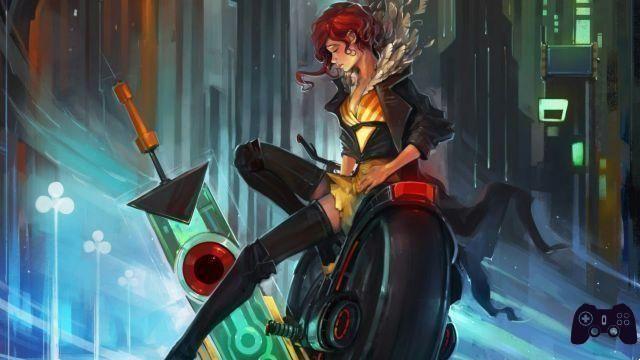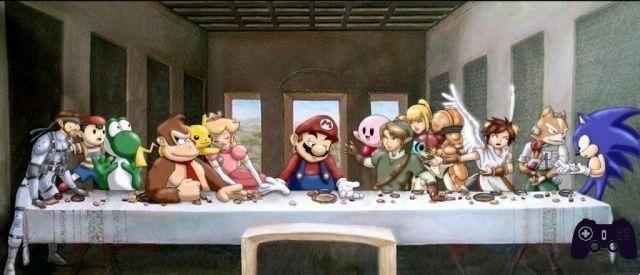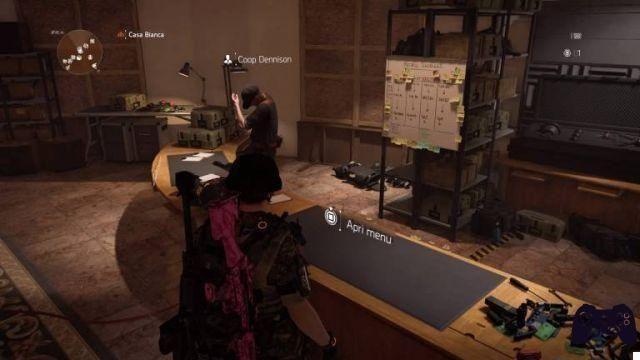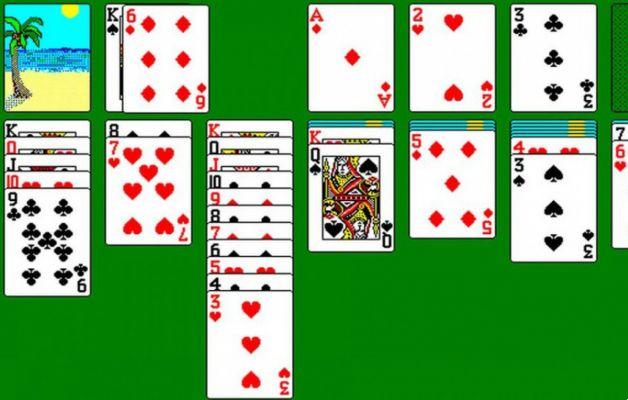
When (and if) the video game stops being pure entertainment and expands its ambitions, becoming part of a debate that - for some - should not even exist: are video games an art form?
Rivers of ink have already been spilled to address the subject, and there are those who firmly believe that, even if there were entire oceans of viscous darkness, all the hypotheses and all the present and future debates may still not be enough. Between those who firmly lash out against the affirmative hypothesis ("Video games can never be Art"; we will get there) and those who, on the other hand, feel obliged to defend it (such as AESVI and, to a large extent, the writer), the problem ofArt in video games it feeds debates on the Internet, on Social Networks and, from time to time, also in prestigious newspapers and specialized magazines.
The topic is undoubtedly broad and complex, and has its roots in a cultural and anthropological problem to which satisfactory answers have been sought for a long time. What is Art, to begin with? Before you can tackle the problem, you need to start from the basics. Get ready: it will be a long and sometimes boring journey, but the writer firmly believes that it is as difficult as it is necessary.

Art: the Search for a Definition
The concept of the video game today is highly subjectivePast editorial debates (often resulting in burning pitchforks, insults to ancestors and a couple of much less sober solutions) have allowed the writer to realize an increasingly evident reality: the conception of the video game can vary from person to person, a reality that the medium could not boast with the same power in the first years of his birth. Many today have an incredibly subjective view of the video game, and it is from this assumption that we must start: it is not possible to please everyone with a universal vision - a truth that, in part, is also proper to Art itself.
The first thing one thinks of when talking about "Art" is a beautiful painting (for example, by Botticelli) or a splendid sculpture by Michelangelo. Yet, the concept of "Art" is far (even if not excessively) from the simple canons of formal beauty and visual creation, so much so that it is conceived differently from culture to culture (the Orientals have a completely different conception of Art than to us Westerners).
In the same way, it seems as easy to say “what is not Art” as it is difficult to say what, in fact, really is; this because Art is constantly changing: it is not easy to find an adequate definition that is valid for all present and future eras. Just think of Cattelan's golden toilet exhibited at the Guggenheim in New York (perfectly functional, by the way), or, going a little further, Andy Warhol's Brillo Boxes. Would you be able to compare these works to a Renaissance painting, to find common formal characteristics in them? Yet, undoubtedly, it is about Art.

The "Brillo" detergent boxes, stacked by Andy Warhol in 1964 to make them a work of art
By detaching themselves from the production processes, some philosophers of Aesthetics like John Dewey they attempted to find a definition that focused more on experiences stimulated by the work that on a characteristic common to every artistic production. And it is here, finally, that the video game enters the field. Dewey got involved by proposing the concept of Art as an experience: called Aesthetic Experience that particular experience characterized by a strong emotional and cognitive component at the same time; it is, in essence, something that can hit us "in the stomach" and "in the brain", in a potentially different way from person to person but also, in a certain sense, shared (we all agree on the beauty of a Canova sculpture; yet , everyone benefits from it in a different way). And it is not difficult to think about how many video games are already able to make us live similar experiences.
The video game, like art, can be a source of extraordinary cognitive and emotional experiences
Starting from these long - and, at the same time, all too synthetic - premises, this article will move to support the idea, the hypothesis, the possibility of conceiving the video game as an art form, and all its consequences. Taking care not to fall into trivialization of the medium and not to commit naive scholastic errors (such as a classification of "artistic" video games and "non-artistic" video games, perhaps applicable to the past but today undoubtedly anachronistic). In the course of our analysis, we will often recall the languages and history of another young art, which developed in little more than a century: Cinema.
A young art
Arts less than a century oldThe primary problem of the video game is that, if we want to define it "the eighth art" (as some have even ventured to do), we cannot ignore placing it in a historical era and observing its entire evolutionary cycle. It is a problem that even the cinema has had to face, especially in the early years of his life: born on December 28, 1895 by the legendary Lumière Brothers, the Seventh Art today has little more than a century, but has already managed to develop its own languages thanks to the disproportionate number of authors who have followed one another in film production. And it has, in any case, fought a lot to be compared with other "Fine Arts", such as Literature, Painting, Sculpture, Theater and so on.
The video game, for its part, barely lived through half of that period, in terms of time. Undoubtedly the incredible technological evolution has helped in the development of today's forms, and it is equally undoubted that today something is starting to move; just as the Cinema had to wait for Avant-garde to begin to really question itself, after all, even the video game has found a greater autonomous identity with the explosion of the Indie market. But there is still a long way to go.
And the most wrong approach is undoubtedly to try to approach it at all costs to what is defined as "the high art", the one with a capital A, that of painting, sculpture and other artistic practices listed a few lines above. This conception of art is now far too far from today's standards (see the aforementioned Brillo Boxes or the Golden Toilet, to name but a few), and the few "unconventional" examples we have already cited only confirm a simple truth : that of "Art" is an open concept, willing to change and always welcome new standards over time. Provided that the necessary conditions exist, it is obvious, often dependent on the context; a context in which the point of view of academics is of absolutely negligible importance.

The "Disinterest" of the Academicians
Those who say that "a video game theory does not exist" has evidently not spent enough time to read up. It is different to say that "the theory of the videogame is not mentioned", and this is undoubtedly correct; yet, a videogame theory already exists in academic circles, and is also quite rich in content: Anglo-Saxon schools are characterized by a certain vision of the videogame, American schools by another; there is an attention sometimes to the "structure" and sometimes to the "user experience"; there are those who focus on “forms” and others on “contents”, and so on. But, just like the audience of the original cinema, the users of the video game are often simple young people (or ex-young people) who only see forms of pure entertainment in it, leaving all possible dissertations on the medium and experiences to the "grown-ups". provided by it.
The game theory exists, but it is not a topic for discussion; neither among the players, nor among the critics.
And, mind you, this is not a criticism with a snobbish aftertaste made to users of the video game, nor does it intend to be: our children will probably have a different conception of the playful medium and our grandchildren still another, as undoubtedly happened for the Cinema in its first years of life, until what is nowadays film criticism has been slowly forming. . It is a simple matter of historical and cultural context, something that, in short, rarely depends on our direct will. Over time, the video game will not be able to help but evolve more and more, going beyond that "academic disinterest" which still does not involve adults but which, within a few generations, could radically change the cards on the table.
The "Playful Avant-gardes": the Independent Market
Of course, the problem of the so-called "Ars Ludica" would not have arisen even only about fifteen years ago, when the sixth generation of consoles (PS2 / Xbox 360) was just born and the video game rarely deviated from that perfect "dichotomy" between challenge and narration (which we will talk about shortly) developed in the mid-nineties. With the advent of Steam and the explosion of digital delivery, however, things changed dramatically: after a few years of adjustment, the independent market understood that it had found a fairly voluminous demand in all that catchment area that was looking for "something different ”from the usual titles of big productions, productions that undoubtedly did not like to dare investing their money in too risky experiments (does it remind you of anything, Hollywood?).

To learn more:
Galeotto was: The indie market that was supposed to save us all
With a term that is perhaps premature and subject to criticism, we venture here the concept of "Playful avant-garde": Although there are still no precise studies able to delimit clear and defined artistic trends, there is no doubt that the Indie market has brought a pleasant breath of fresh air to the international videogame scene, and the spread of the Internet on a global scale has allowed “playful artists” from all over the world to try to launch themselves on online distribution platforms, proposing their ideas (often original and interesting) and helping them to tell their own stories. With this we absolutely do not want to make an exclusive apology for the independent market, and our subsequent analyzes (including names such as Uncharted and Shadow Of The Colossus, to name just a few) will be useful to define the question in this sense: the so-called "artistry" (in the sense promoted by this article; follow us) and creativity can also be found in large productions, and this, especially in today's scenario, is indisputable.
The fact remains that, at times, independent productions manage to have “that extra gear”: titles like Life Is Strange, with an indisputable emotional and cognitive impact, or visual pearls such as monument Valley, Braid and many others. Even the originality of the weird Pony Island it could be subject to "artistry", in its being destabilizing and in its ability to convey a very precise and defined authorial idea (the mash-up of genres, for example), all accompanied by the use of aesthetics that are anything but random . But it is a topic that we will address on the next page.
1 2


























